
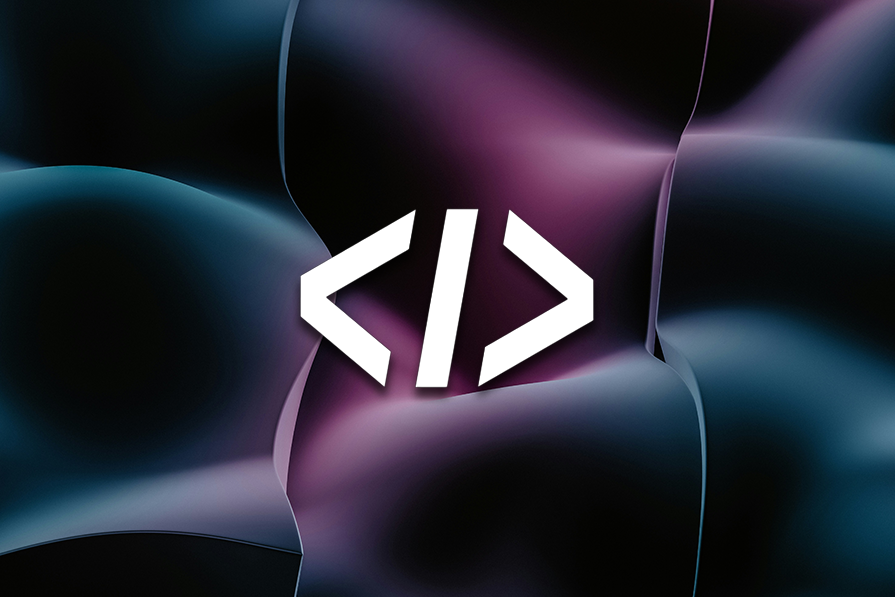
Two decades ago, every ecommerce store used monolithic architecture, mostly because it was easy to get started with. The pre-built templates and functionalities they offered were great, but over time, people realized that they were also difficult to customize, restricting the ability to provide unique brand experiences and consistent interactions across multiple devices (mobile, web, etc.).
Additionally, making changes to the backend of this system usually impacts the frontend and vice versa, making updates slow and risky.
Over the last decade, the ecommerce industry has shifted from monolithic architecture to a better system: headless architecture. Headless architecture separates the frontend presentation layer (the storefront) from the backend commerce functionality (product data, shopping cart, order processing). This decoupling allows businesses to create unique and engaging customer experiences tailored to their brand identity and specific needs.
However, with a growing number of headless commerce platforms diluting the market, choosing the right one can be overwhelming due to the sheer number of options available. But fear not, because this article explores some of the best options, including free/self-hosted solutions and paid platforms.
But first, what should you consider when choosing a headless commerce platform?
The Replay is a weekly newsletter for dev and engineering leaders.
Delivered once a week, it's your curated guide to the most important conversations around frontend dev, emerging AI tools, and the state of modern software.
Choosing the right headless commerce platform is crucial because it can mean the difference between success and failure for an ecommerce store. Here are some key factors to consider:
Customization
First, confirm the platform’s ability to accommodate your business requirements and allow for extensive customization. A headless architecture should provide the freedom to build unique and tailored ecommerce experiences, or else there’s no point switching to it.
Security
Security is critical to every ecommerce business because you’ll be dealing with your users’ bank information. Before you choose, review the platform’s security measures, including data encryption, access controls, and compliance with industry standards and regulations (e.g., PCI-DSS, GDPR). All of these are critical for the safety of your users and your own reputation.
Pricing
Consider the platform’s pricing model (e.g., subscription-based, transaction-based, or a combination) and evaluate the total cost of ownership, including potential implementation costs, maintenance, and support.
Omnichannel support
If you plan to sell across multiple channels (e.g., websites, mobile apps, marketplaces), ensure that the platform supports omnichannel sales and provides a consistent experience across different touchpoints.
Now that you know what to look for when choosing a headless ecommerce platform, let’s review some of the best headless commerce platforms available.
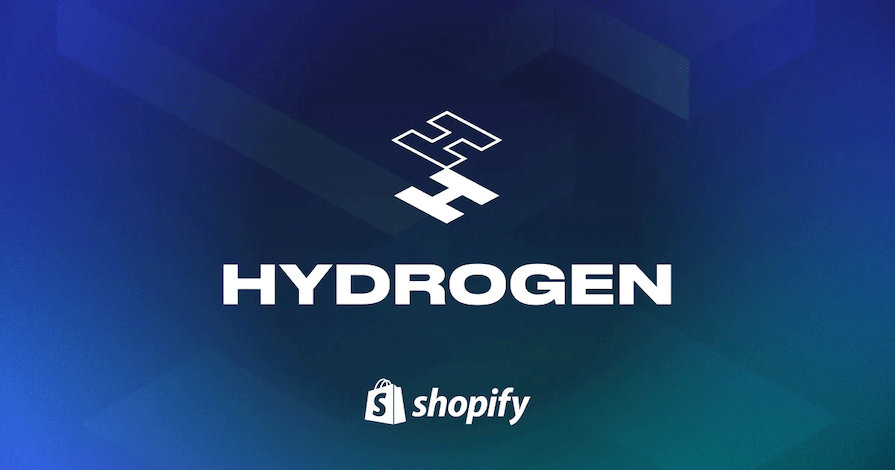
Shopify is one of the biggest ecommerce platforms in the world and holds the fourth-largest market share of any ecommerce platform worldwide. Shopify’s headless commerce arm, Hydrogen, is designed specifically for building custom ecommerce storefronts on Shopify’s infrastructure.
Hydrogen is a React-based framework, and it uses Server Components, which allow developers to render React components on the server, improving performance and enabling server-side rendering (SSR) for ecommerce storefronts. Hydrogen also provides a pre-built cart experience that can be easily integrated into your custom storefronts, streamlining the development process.
Hydrogen’s tight integration with Shopify’s backend services, especially Shopify’s global edge hosting platform (Oxygen), simplifies the development process. It also provides access to a wide range of ecommerce features out of the box and ensures your store has fast loading times, which is great for your users and SEO.
Overall, Hydrogen is a powerful and well-designed framework for building custom ecommerce storefronts, and its only drawback is its heavy reliance on React and the Shopify ecosystem, which can be a bit limiting. And because it’s in the Shopify ecosystem, Hydrogen is not free, and you have to pay to access it.
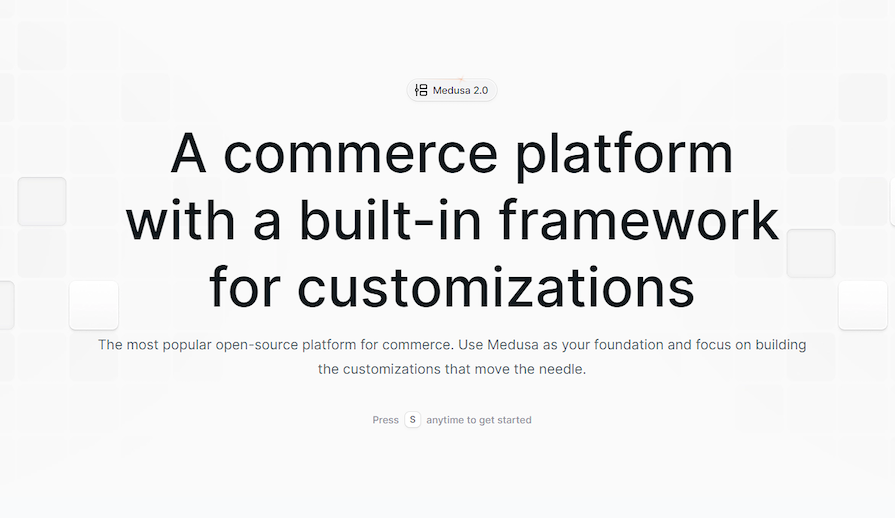
Medusa is an open source headless commerce platform built with JavaScript and Node.js, and it’s one of the most popular headless ecommerce platforms available today. Medusa prides itself as a Shopify alternative, and its popularity is mostly due to its flexible architecture and robust API, which allow developers to create custom storefronts using their preferred frameworks (React, Vue.js, Next.js, etc.).
Medusa comes with a user-friendly admin dashboard, making it easy to manage products, orders, and other ecommerce-related tasks. It also supports multi-store functionality, allowing businesses to manage multiple storefronts from a single backend.
Thanks to its popularity, Medusa has an active development community that ensures regular updates, bug fixes, and the introduction of new features. Still, like two sides of a coin, this community dependency may impact the platform’s growth if support wanes.
Medusa is especially developer-friendly, with extensive documentation and a supportive community. Getting started with Medusa is very easy, so if you want to try it out, you’re in for a good time. And it’s free, so you’ve got nothing to lose.
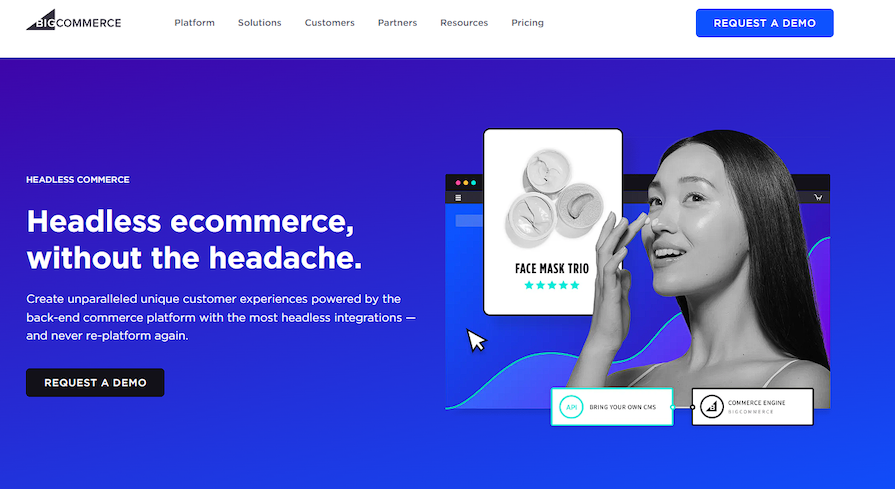
Next on our list is BigCommerce, a cloud-based headless commerce platform that offers a range of features tailored for businesses of all sizes. BigCommerce provides a great API catalog for building custom storefronts using Next.js, Gatsby.js, and Nuxt.js, and you can use these APIs to access all the product data on your store.
From facilitating purchases using the Orders and Payments API to using the Customer API to retrieve and update customer data, BigCommerce has you covered as a headless commerce solution.
BigCommerce’s infrastructure is built to handle high traffic volumes and large product catalogs, making it a strong choice for businesses anticipating significant growth, ensuring their headless storefront can handle increasing demands. BigCommerce provides advanced SEO features and comprehensive analytics and reporting tools, enabling businesses to track and analyze their sales, customer behavior, and marketing performance.
BigCommerce offers several pricing plans based on annual sales revenue, ranging from $29.95 per month (for the Standard plan) to $299.95 per month (for the Enterprise plan). They also offer an Enterprise Plus plan for larger businesses with more complex requirements, which is priced on a custom basis.
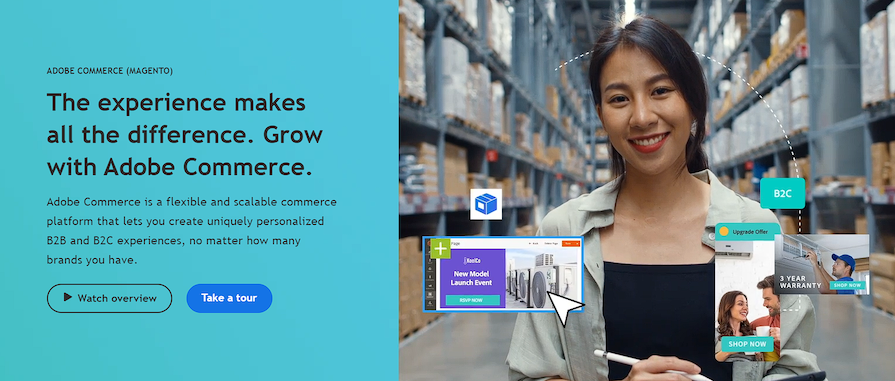
Adobe Commerce (formerly known as Magento) is one of the best headless commerce solutions over the last decade, with a significant market share and widespread adoption among small, medium, and large businesses.
Adobe Commerce is renowned for its many features and high degree of customization, and it’s built to handle high-volume businesses with complex needs. For companies that handle sensitive customer data, Adobe is a good choice because one of its core selling points is its priority for security.
If you plan to establish a global brand, Adobe Commerce has you covered. It supports the creation of multiple storefronts and currencies, making it ideal for businesses with international operations. The platform offers powerful marketing and promotion capabilities, including personalized product recommendations, targeted promotions, and email marketing tools, making it a strong option for your business needs.
Adobe Commerce’s only major drawback is its pricing, as it employs a custom quote system based on your specific needs and transaction volume, so you can expect it to be a significant investment compared to other headless commerce platforms.
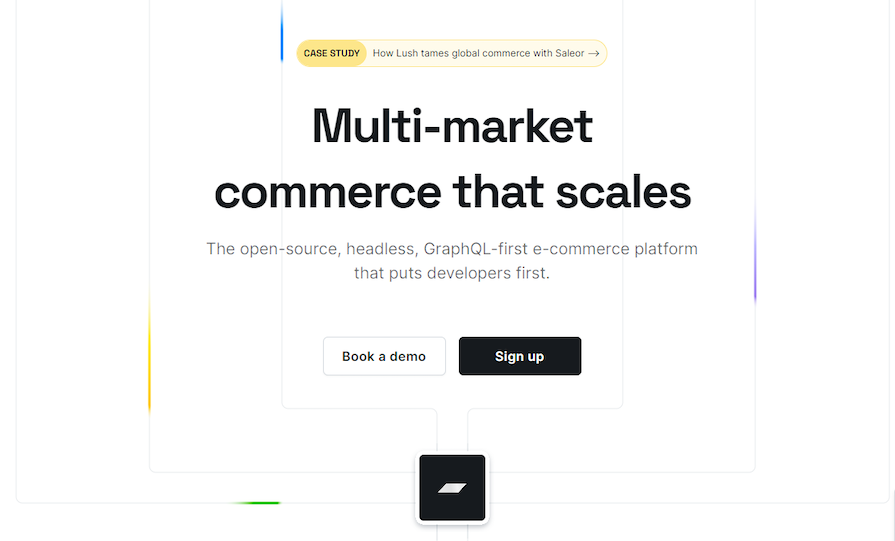
Like Medusa, Saleor is an open source headless ecommerce platform that offers extensive customization options for companies that are looking to control costs. Developed with Python and Django, Saleor allows developers to create highly extensible ecommerce storefronts with any modern frontend technology, such as React, Vue, or Angular.
At the core of Saleor lies a powerful GraphQL API, which streamlines data fetching and eliminates common issues like over-fetching and under-fetching. This API serves as the backbone, enabling communication between the frontend and backend, ensuring efficient data transfer and enhancing overall performance.
Saleor can handle high volumes of traffic and can be scaled up as your business grows, so you don’t have to worry about changing platforms later on. The platform also has an extremely user-friendly interface that simplifies product management activities, from creating and organizing products, categories, and collections to managing taxes and shipping methods.
Because Saleor is an open source platform, it boasts a large and active developer community, and users have access to many resources, support forums, and experts who can assist with any challenges. It has a free tier and a pro plan that costs $1295 monthly, and there’s an extra custom tier for enterprise-level companies.

Sylius is another strong contender in the open source ecommerce platform arena. Built on the solid foundation of the Symfony framework and backed by an active community, Sylius presents a powerful and versatile ecommerce solution for businesses looking to stay ahead of the curve while saving costs.
Sylius is highly customizable, thanks to its powerful plugin system, which allows developers to add custom functionality and integration. This modularity not only enhances Sylius’s capabilities but also future-proofs it, ensuring that businesses can adapt and evolve as their needs change.
While Sylius boasts an impressive array of features, it’s important to note that its learning curve can be steeper, especially for developers unfamiliar with the Symfony framework or its architecture. However, this is mitigated by Sylius’s thriving community of developers who contribute to its ongoing development and provide valuable resources and support.
Sylius itself is free to download and use, making it a cost-effective option. However, depending on your needs, you may incur costs for hosting, development services to customize Sylius or build a headless storefront, and premium plugins.

Last but by no means least is Salesforce Commerce Cloud, another great contender in the headless commerce field. Salesforce Commerce Cloud is a cloud-based, headless commerce platform specifically designed for enterprise-level high-volume businesses with complex ecommerce requirements.
One great thing about this platform is its omnichannel capabilities that allow businesses to deliver consistent experiences across multiple touchpoints, such as web, mobile, social media, and physical stores. Salesforce Commerce Cloud also offers sophisticated merchandising and personalization tools that let you create targeted and personalized shopping experiences for your customers.
In terms of scalability and performance, this platform sits at the top with the best of them, as it’s designed to be highly scalable and performant, capable of handling high traffic volumes and complex ecommerce operations. Salesforce Commerce Cloud also uses AI and ML technologies to provide intelligent product recommendations, search functionality, and customer insights.
Unfortunately, like Adobe Commerce, Salesforce Commerce Cloud uses a custom quote system that often means a hefty price tag, making it less suitable for startups or budget-conscious businesses. But because it’s designed for enterprise-level companies, most of its target audience would have no problem paying that price.
Headless commerce offers exciting possibilities for frontend developers to create unique and engaging ecommerce experiences, and with the increasing demand for personalized and engaging user experiences, the choice of a powerful and flexible headless commerce platform is crucial for frontend ecommerce development.
There are several different choices here. Some, like Shopify Hydrogen, have a set price. Medusa is open source and free. Others offer custom quotes. Regardless of the choice you make, these platforms are among the best headless commerce platforms available today, and they all hold a significant market share because of how great they are for ecommerce.
Remember, the choice you make depends on your project requirements, not just the popularity of these headless commerce solutions. So take your time, go through their features, and make sure the platform you pick is the right fit for your project.

Valdi skips the JavaScript runtime by compiling TypeScript to native views. Learn how it compares to React Native’s new architecture and when the trade-off makes sense.

What trends will define web development in 2026? Check out the eight most important trends of the year, from AI-first development to TypeScript’s takeover.

AI-first debugging augments traditional debugging with log clustering, pattern recognition, and faster root cause analysis. Learn where AI helps, where it fails, and how to use it safely in production.

Container queries let components respond to their own layout context instead of the viewport. This article explores how they work and where they fit alongside media queries.
Would you be interested in joining LogRocket's developer community?
Join LogRocket’s Content Advisory Board. You’ll help inform the type of content we create and get access to exclusive meetups, social accreditation, and swag.
Sign up now